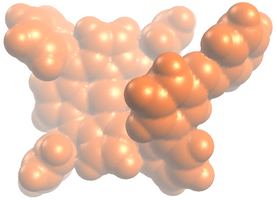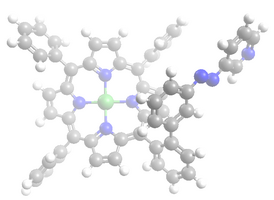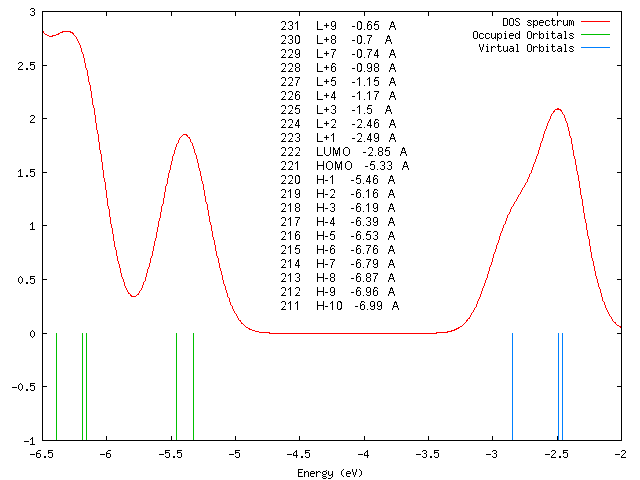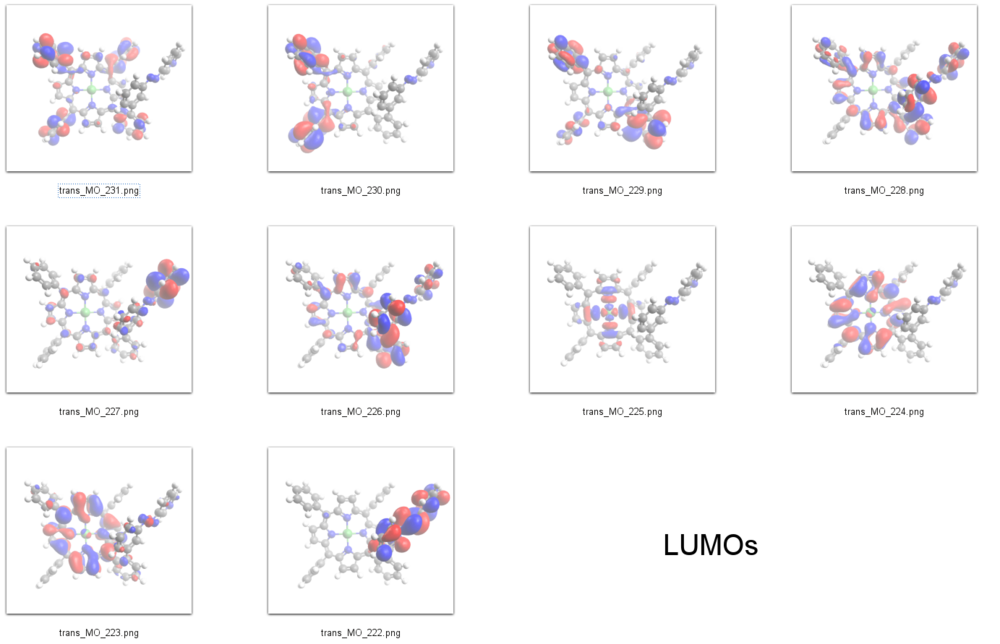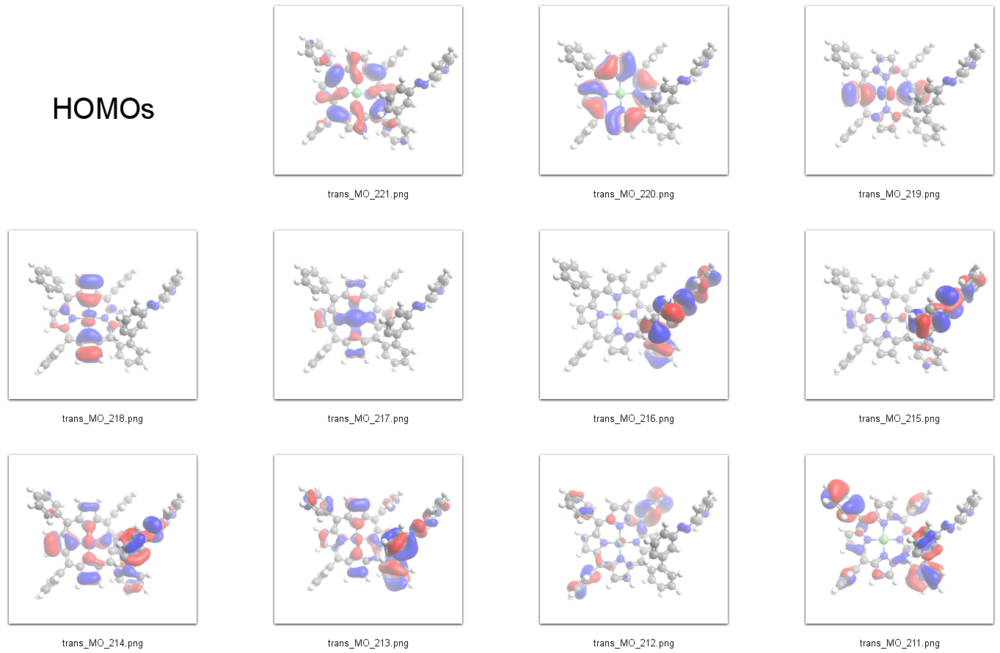Plattenspieler trans-Orbitale
Struktur
Orbitale
DOS-Spektrum
LUMOs
HOMOs
Orbitalenergien
231 L+9 -0.65 A 230 L+8 -0.7 A 229 L+7 -0.74 A 228 L+6 -0.98 A 227 L+5 -1.15 A 226 L+4 -1.17 A 225 L+3 -1.5 A 224 L+2 -2.46 A 223 L+1 -2.49 A 222 LUMO -2.85 A 221 HOMO -5.33 A 220 H-1 -5.46 A 219 H-2 -6.16 A 218 H-3 -6.19 A 217 H-4 -6.39 A 216 H-5 -6.53 A 215 H-6 -6.76 A 214 H-7 -6.79 A 213 H-8 -6.87 A 212 H-9 -6.96 A 211 H-10 -6.99 A
Download
Dateien als Zip-Archiv runterladen
Interpretation of STS-spectra
According to our DFT-calculations (B3LYP/6-311+G*) the n and 𝜋 orbitals of the diazapyridine unit differ in the cis and trans configuration, similar to the parent azobenzene. The highest occupied orbital with coefficients located at the azopyridine unit (n type orbital) is considerably higher in energy for the cis as compared to the trans isomer (Ecis=-6.19 eV(MO=219)), (Etrans=-6.53 eV(MO=216)).
We therefore identify the signal at -1 eV in the STS spectrum of the cis isomer as the lone pair orbital mainly located at the azo-group of the azopyridine unit (MO=219). The lone pair orbitals at the azo group of the cis isomer have their maximum elevation pointing away from the surface and thus are exposed to the STM tip which gives rise to a large signal.

